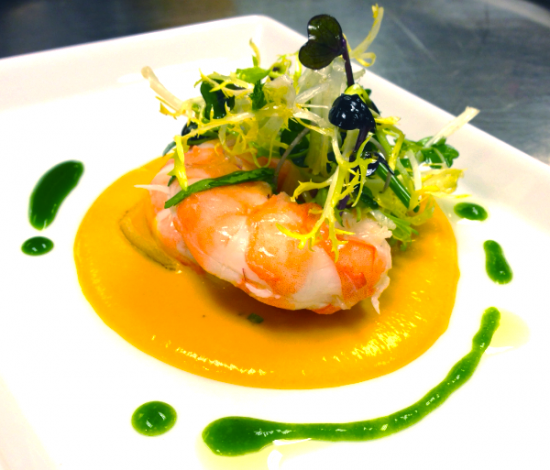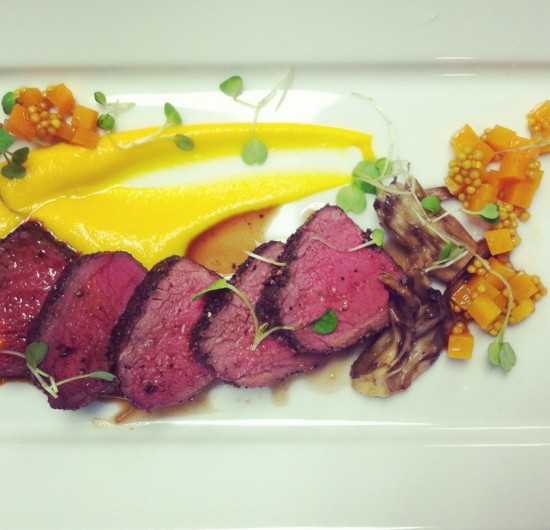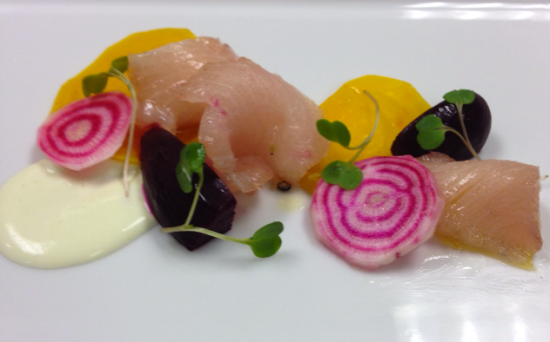In the culinary world, it is often said that we eat with our eyes first. If something doesn’t look appetizing, people won’t want to eat it, regardless of whether the flavor is on point. You know when you are scrolling through Facebook, minding everybody else's business and are suddenly bombarded with a picture of some blurry, washed-out mess on a plate? “Home-cooked dinner!”, the caption proudly boasts. I’m sure your spinach lasagna tastes great, Aunt Susan, but right now, it looks like the Wicked Witch of the West just melted into a puddle on your plate.
A portion of ICE's Culinary Arts curriculum involves learning how not to be that person. The final week of Module 3 is dedicated to one thing: plating. Sure, you learn delicious new recipes using spectacular ingredients (hello, foie gras!), but for once, the primary focus is on presentation, not flavor.

Part of working in a kitchen, particularly that of a fine dining establishment, is paying meticulous attention to detail while keeping up with the fast-pace of a restaurant—a balance so difficult to achieve, it feels almost contradictory. Each plate must be flawlessly beautiful, then replicated over and over and over again.

During this third Module, my classmates and I got our first taste of plating under intense pressure and the difficulty and excitement that come along with it. We went through the components that make up a dish, all revolving around the concept of "balance"—balance of texture, color, shape, and (of course) flavor.
This balance is what differentiates a "nice" dish from a "spectacular" dish. As our chef-instructor taught us on the first day, it should look like all the elements of the plate fell from the sky and landed exactly in the right spot. The average diner might not notice the balance of these four components when done right, but will certainly take notice when they are done wrong.

While I was initially unenthused by the prospect of spending a week learning how to put food on a plate (how hard can it be?), it turned out to be one of my favorite weeks in culinary school thus far. There is something very rewarding about taking the various components of a dish—all of which you have worked hard to prepare—and combining them into a beautiful and cohesive creation.
These are the practical skills that my classmates and I need to succeed in the culinary industry, not to mention our social media lives. After this week, I am confident I'll never find myself pulling an Aunt Susan!



